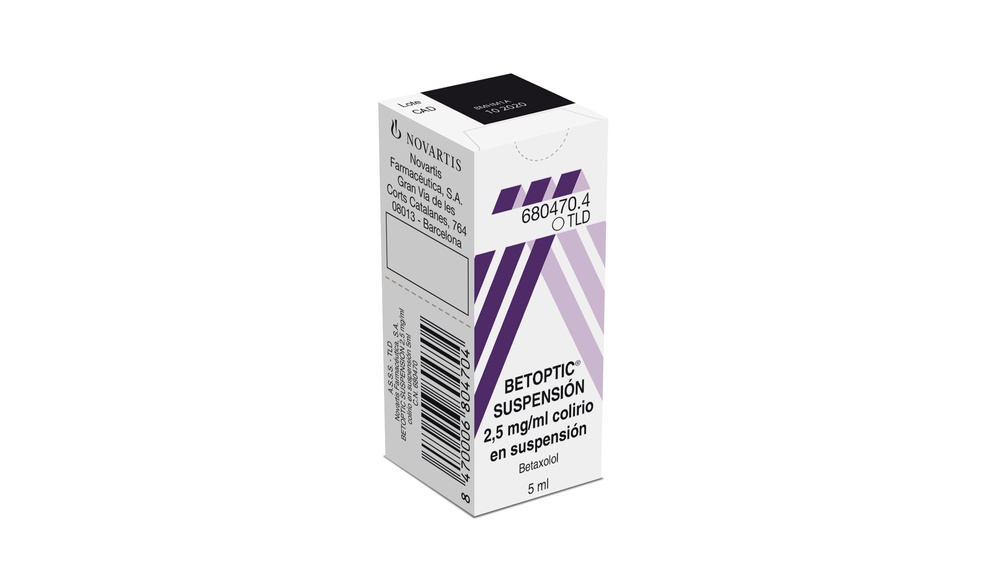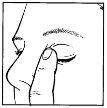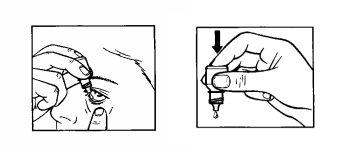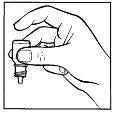

БЕТОПТИК СУСПЕНЗІЯ 2,5 мг/мл КРАПЛІ ОЧНІ

Запитайте лікаря про рецепт на БЕТОПТИК СУСПЕНЗІЯ 2,5 мг/мл КРАПЛІ ОЧНІ

Інструкція із застосування БЕТОПТИК СУСПЕНЗІЯ 2,5 мг/мл КРАПЛІ ОЧНІ
Введення
Опис: інформація для користувача
BETOPTIC СУСПЕНЗІЯ 2,5 мг/мл офтальмологічна суспензія
Бетаксолол
Перш ніж почати використовувати цей лікарський засіб, уважно прочитайте весь опис, оскільки він містить важливу інформацію для вас.
- Збережіть цей опис, оскільки вам може знадобитися знову його прочитати.
- Якщо у вас виникли питання, проконсультуйтеся з вашим лікарем або фармацевтом.
- Цей лікарський засіб призначений тільки для вас, і не слід давати його іншим людям
, навіть якщо вони мають такі самі симптоми, як у вас, оскільки це може їм нашкодити.
- Якщо ви відчуваєте побічні ефекти, проконсультуйтеся з вашим лікарем або фармацевтом, навіть якщо це побічні ефекти, які не вказані в цьому описі. Див. розділ 4.
Зміст опису
- Що таке BETOPTIC СУСПЕНЗІЯ і для чого вона використовується
- Що потрібно знати перед початком використання BETOPTIC СУСПЕНЗІЇ
- Як використовувати BETOPTIC СУСПЕНЗІЮ
- Можливі побічні ефекти
- Зберігання BETOPTIC СУСПЕНЗІЇ
- Зміст упаковки та додаткова інформація
1. Що таке BETOPTIC СУСПЕНЗІЯ і для чого вона використовується
Це офтальмологічна суспензія, яка належить до групи лікарських засобів, званих бета-блокаторами, і містить активну речовину бетаксолол, яка діє шляхом зменшення тиску всередині ока (інтраокулярного), можливо, шляхом зменшення вироблення водянистої рідини (ліквору передньої камери ока).
BETOPTIC СУСПЕНЗІЯ призначена для зниження підвищеного інтраокулярного тиску у пацієнтів з хронічним відкритокутовим глаукомою або з окулярною гіпертензією.
Її можна використовувати самостійно або в поєднанні з іншими лікарськими засобами, які знижують інтраокулярний тиск.
2. Що потрібно знати перед початком використання BETOPTIC СУСПЕНЗІЇ Не використовувати BETOPTIC СУСПЕНЗІЮ
?
? Якщо ви страждаєте на серцеву недостатність, повільний серцевий ритм або порушення серцевого ритму (аритмію) чи інші серцеві захворювання, які інколи призводять до втрати свідомості.
? Якщо ви страждаєте на важкі дихальні захворювання, такі як важка астма, або хронічну обструктивну захворювання легенів (важке захворювання легенів, яке може призвести до свистіння, труднощів з диханням і/або тривалого кашлю).
Попередження та обережність
Проконсультуйтеся з вашим лікарем або фармацевтом перед початком використання BETOPTIC СУСПЕНЗІЇ.
? Використовуйте цей лікарський засіб тільки для ока (очей).
? Перед початком використання цього лікарського засобу, повідомте вашому лікареві, якщо ви страждаєте або страждали:
- коронарним захворюванням (симптоми можуть включати стиск у грудній клітці або біль, коротке дихання або задуха), серцевою недостатністю, низьким артеріальним тиском.
- блокадою серця першого ступеня (захворювання, пов'язане з серцевим ритмом).
- дихальними захворюваннями, астмою або хронічною обструктивною захворювання легенів.
- захворюваннями, пов'язаними з поганою циркуляцією крові (такими як захворювання Рейно, з онімінням пальців рук або ніг).
- цукровим діабетом, оскільки бетаксолол може приховувати ознаки та симптоми низького рівня цукру в крові.
? У пацієнтів з підозрою на гіпертиреоз слід проводити ретельний контроль.
? Якщо ви маєте історію важких алергічних реакцій або атопічних реакцій (алергії невідомої етіології), ви можете бути більш чутливими до різних алергенів. Якщо ви відчуваєте будь-яку важку алергічну реакцію (виразку на шкірі, червоність і свербіж у оці, гарячку, набряк горла, язика або обличчя) під час використання цього лікарського засобу, негайно припиніть лікування і проконсультуйтеся з вашим лікарем. Коли ви отримуєте будь-яке лікування, повідомте вашому лікареві, що ви використовуєте цей лікарський засіб.
? Якщо ви приймаєте інший бета-блокаторний лікарський засіб, включно з іншими шляхами введення, слід бути обережним.
? Повідомте вашому лікареві, що ви використовуєте цей лікарський засіб, перед тим як піддатися операції, оскільки бетаксолол може змінити дію деяких лікарських засобів, які використовуються під час анестезії.
? Якщо ви страждаєте на глаукому з закритим кутом, вам слід призначити цей лікарський засіб разом з іншими лікарськими засобами, які діють на закриття зіниці. Слід регулярно контролювати тиск ока, особливо на початку лікування.
? Якщо ви страждаєте на захворювання рогівки (прозорої оболонки передньої частини ока), слід проконсультуватися з лікарем, оскільки цей лікарський засіб може призвести до сухості в очах.
? Якщо ви страждаєте на захворювання шкіри типу псоріазу, воно може погіршитися.
? Якщо ви використовуєте контактні лінзи:
Не слід використовувати цей лікарський засіб, коли ви носите контактні лінзи.
Використання у пацієнтів похилого віку
Див. розділ 3.
Використання у спортсменів
Цей лікарський засіб містить компонент бетаксолол, який може призвести до позитивного результату при тестах на допінг.
Діти
Ефектність і безпека не встановлені у дітей.
Інші лікарські засоби та BETOPTIC СУСПЕНЗІЯ
Повідомте вашому лікареві або фармацевту, якщо ви приймаєте, нещодавно приймали або можете приймати будь-який інший лікарський засіб.
Цей лікарський засіб може впливати або бути під впливом інших лікарських засобів, які ви приймаєте, включно з іншими офтальмологічними лікарськими засобами для лікування глаукоми. Проконсультуйтеся з лікарем, якщо ви приймаєте або плануєте приймати лікарські засоби для зниження артеріального тиску, лікарські засоби для серця або лікарські засоби для лікування цукрового діабету, стимулятори парасимпатичної системи та психотропні адренергічні лікарські засоби (зазвичай використовувані для розладів уваги).
Вагітність, лактація та фертильність
Якщо ви вагітні або перебуваєте у період лактації, вважаєте, що можете бути вагітною або плануєте завагітніти, проконсультуйтеся з лікарем або фармацевтом перед використанням цього лікарського засобу. Не слід використовувати цей лікарський засіб, якщо ви вагітні, окрім випадків, коли лікар вважає це необхідним.
Не слід використовувати цей лікарський засіб, якщо ви перебуваєте у період лактації, оскільки бетаксолол може проникнути до молока.
Водіння транспортних засобів та використання машин
Ви можете помітити, що ваш зір стає нечітким протягом деякого часу після застосування крапель. Не слід водити транспортні засоби чи використовувати машини до тих пір, поки цей ефект не зникне.
BETOPTIC СУСПЕНЗІЯ містить бензалконій хлорид
Цей лікарський засіб містить 0,1 мг бензалконію хлориду в кожному мл.
Бензалконій хлорид може бути поглинений м'якими контактними лінзами, змінюючи їх колір. Видаліть контактні лінзи перед використанням цього лікарського засобу та зачекайте 15 хвилин перед тим, як знову їх носити.
Бензалконій хлорид може призвести до очної іритації, особливо якщо ви страждаєте на сухість ока чи інші захворювання рогівки (прозорої оболонки передньої частини ока). Проконсультуйтеся з лікарем, якщо ви відчуваєте якусь незвичайну відчуття, свербіж або біль в оці після використання цього лікарського засобу.
3. Як використовувати BETOPTIC СУСПЕНЗІЮ
Слідуйте точно інструкціям щодо застосування цього лікарського засобу, вказаним вашим лікарем. У разі сумнівів проконсультуйтеся з лікарем або фармацевтом знову.
Використання у дорослих
Рекомендована доза становить 1-2 краплі в око (очі) 2 рази на день (вранці та ввечері).
Можуть знадобитися кілька тижнів, щоб досягти стабільної реакції на лікування.
Терапія заміщення (монотерапія): якщо ви приймаєте інший лікарський засіб для глаукоми та лікар призначив вам замінити його на BETOPTIC СУСПЕНЗІЮ, у перший день продовжуйте приймати попередній лікарський засіб та додайте 1 краплю BETOPTIC СУСПЕНЗІЇ в око (очі) 2 рази на день. Наступного дня припиніть приймати попередній лікарський засіб та продовжуйте тільки з BETOPTIC СУСПЕНЗІЄЮ у звичайній дозі.
Терапія заміщення (комбінаційна терапія): якщо ви приймаєте кілька лікарських засобів для глаукоми, лікар призначить вам схему дозування, регулюючи один лікарський засіб за раз, з інтервалом не менше однієї тижня.
Для досягнення більшої зниження інтраокулярного тиску ваш офтальмолог може призначити вам інші лікарські засоби, які слід використовувати разом з цим лікарським засобом.
Використання у пацієнтів похилого віку
Рекомендується починати лікування з найнижчої рекомендованої дози бетаксололу, оскільки пацієнти похилого віку, ймовірно, мають захворювання, пов'язані з віком, такі як серцеві захворювання або периферичні захворювання судин.
Якщо клінічна реакція не є достатньою, лікар може змінити дозу до 2 крапель BETOPTIC СУСПЕНЗІЇ в око (очі) 2 рази на день (вранці та ввечері) з належними обережностями.
Використання у дітей
Ефектність і безпека не встановлені у дітей.
Лікар повинен ретельно оцінити користь і ризик перед призначенням цього лікарського засобу дітям, проводячи необхідні дослідження та збір анамнезу.
У разі призначення цього лікарського засобу дітям рекомендується використовувати найнижчі дози один раз на день. Слід проводити ретельний контроль пацієнтів-дітей, особливо маленьких, починаючи з 1-2 годин після застосування першої дози.
Рекомендації щодо використання:



1 2 3 4
- Вимийте руки.
- Візьміть флакон (крапельницю).
- Витрясіть добре перед використанням.
- Після відкриття флакона вперше слід видалити пластикову кільцеву кришку, якщо вона є.
- Тримайте флакон, дно якого звернено вниз, між пальцями (рисунок 1).
- Наклоніть голову назад. Ніжно відокреміть повіку ока пальцем, поки не утвориться мішечок, у який повинна потрапити крапля (рисунок 2).
- Принесіть кінчик флакона до ока. Вам може знадобитися дзеркало.
- Не торкайтеся ока або повіки, сусідніх зон чи інших поверхонь крапельницею. Офтальмологічна крапля може бути забруднена.
- Натисніть на основу флакона вказівним пальцем, щоб одна крапля впала
(рисунок 3).
- Після використання цього лікарського засобу натисніть на край ока біля носа протягом 2 хвилин (рисунок 4). Це допомагає запобігти потраплянню цього лікарського засобу в інші частини тіла.
- Якщо ви застосовуєте краплі в обидва ока, повторіть усі попередні кроки з іншим оком.
- Закрийте флакон щільно відразу після використання продукту.
Якщо крапля впала поза оком, спробуйте знову.
Якщо ви використовуєте інші офтальмологічні лікарські засоби, чекайте принаймні 5 хвилин між застосуванням цієї краплі та іншими офтальмологічними лікарськими засобами. Офтальмологічні мазі слід застосовувати в останню чергу.
Якщо ви використали більше BETOPTIC СУСПЕНЗІЇ, ніж потрібно
Передозування в очах можна видалити, промивши очі теплою водою. Не застосовуйте більше крапель, доки не настане час наступної дози.
У разі передозування або випадкового прийому внутрішньо проконсультуйтеся з лікарем або фармацевтом або зверніться до Токсикологічної служби, телефон: 91 562 04 20, вказавши лікарський засіб та кількість, яку ви використали.
Симптоми передозування або випадкового прийому внутрішньо можуть бути: повільний серцевий ритм, зниження артеріального тиску, серцеві або дихальні проблеми. Якщо це відбувається, припиніть лікування та проконсультуйтеся з лікарем.
Якщо ви забули використовувати BETOPTIC СУСПЕНЗІЮ
Не слід застосовувати подвійну дозу для компенсації пропущених доз.
Застосуйте одну дозу якнайшвидше, коли ви про це пам'ятате, та продовжуйте з наступною дозою, яка була запланована. Однак, якщо вже майже час наступної дози, не застосовуйте пропущену дозу та продовжуйте з наступною дозою вашого звичайного режиму.
Якщо у вас є інші питання щодо використання цього лікарського засобу, проконсультуйтеся з лікарем або фармацевтом.
4. Можливі побічні ефекти
Як і всі лікарські засоби, цей лікарський засіб може призвести до побічних ефектів, хоча не всі люди їх відчувають.
Наступні побічні ефекти були повідомлені щодо цього лікарського засобу:
Дуже часті побічні ефекти (можуть впливати на більше 1 з 10 осіб):
Ефекти в оці: незручність в оці.
Часті побічні ефекти (можуть впливати до 1 з 10 осіб):
Ефекти в оці: нечіткий зір, збільшення виділення сльоз.
Загальні ефекти: головний біль.
Побічні ефекти, що рідко трапляються (можуть впливати до 1 з 100 осіб):
Ефекти в оці: запалення ока з або без пошкодження поверхні (кератит), запалення кон'юнктиви, запалення повіки, порушення зору, чутливість до світла, біль в оці, сухість ока, втома ока, порушення повіки, свербіж в оці, виділення з ока, кришка на повіці, запалення ока, подразнення ока, порушення кон'юнктиви, набряк ока, червоність ока.
Загальні ефекти: зниження серцевого ритму, збільшення серцевого ритму, астма, труднощі з диханням, нудота, запалення всередині носа.
Рідкі побічні ефекти (можуть впливати до 1 з 1 000 осіб):
Ефекти в оці: затуманення ока (катаракта).
Загальні ефекти: втрати свідомості, поганий смак, кашель, гнойний насморк (риніт), запалення шкіри, висип, зниження артеріального тиску, тривога, зниження статевого потягу.
Під час постмаркетингового досвіду були повідомлені додаткові побічні ефекти, щодо яких не відомо частоту:
Ефекти в оці: червоність повіки.
Загальні ефекти: нерегулярний серцевий ритм, головокружіння, випадіння волосся, слабкість тіла, алергія, труднощі з сном (безсоння), депресія.
Як і інші лікарські засоби, що вводяться в очі, бетаксолол всмоктується в кров. Це може призвести до побічних ефектів, подібних до тих, які спостерігаються при внутрішньовенному або пероральному застосуванні бета-блокаторів. Частота побічних ефектів після офтальмологічного застосування нижча, ніж при пероральному або ін'єкційному застосуванні лікарських засобів. Побічні ефекти, описані нижче, включають реакції, спостережувані в класі офтальмологічних бета-блокаторів при лікуванні захворювань ока:
- Алергічні реакції, що включають набряк під шкірою, який може виникнути на обличчі та кінцівках, і може блокувати дихальні шляхи, що призводить до труднощів з ковтанням або диханням, кропив'янка або висип, свербіж, алергічна реакція, що розвивається раптово.
- Низький рівень цукру в крові.
- Труднощі з сном, депресія, кошмари, втрати пам'яті.
- Втрати свідомості, втома, зниження кровотоку до мозку, збільшення симптомів міастенії (м'язового захворювання), головокружіння, незвичайні відчуття, такі як оніміння, головний біль.
- Симптоми очної іритації (такі як печіння, колючість, сльозотеча, червоність), запалення повіки, рогівки, порушення зору, чутливість до світла, біль в оці, сухість ока, ерозія рогівки, опущення верхньої повіки (що призводить до того, що око залишається наполовину закритим), подвійне бачення.
- Біль у грудній клітці, серцебиття, набряк (едем), зміни в ритмі або частоті серцебиття, інші порушення серцевої діяльності, що супроводжуються труднощами з диханням та набряком ніг і ступнів через накопичення рідини (серцева недостатність), зупинка серця, серцева недостатність.
- Низький артеріальний тиск, захворювання Рейно (захворювання, що супроводжується зниженням кровотоку до рук і ніг).
- Труднощі з диханням (головним чином у пацієнтів з захворюванням бронхів), кашель.
- Захворювання травної системи, такі як нудота, диспепсія, діарея, сухість у роті, біль у животі тощо.
- Випадіння волосся, висип, подібний до псоріазу, або погіршення псоріазу, висип на шкірі.
- Біль у м'язах.
- Дисфункція статевої сфери, зниження статевого потягу.
- Втома.
Зазвичай, ви можете продовжувати використовувати краплі, якщо тільки ефекти не будуть важкими. Якщо ви стурбовані, проконсультуйтеся з лікарем або фармацевтом. Не припиняйте використання цього лікарського засобу без консультації з лікарем.
Повідомлення про побічні ефекти
Якщо ви відчуваєте будь-який побічний ефект, проконсультуйтеся з лікарем або фармацевтом, навіть якщо це побічні ефекти, які не вказані в цьому описі. Ви також можете повідомити про них безпосередньо через Систему фармакологічного нагляду за лікарськими засобами для людини: https://www.notificaRAM.es.Повідомляючи про побічні ефекти, ви можете допомогти надати більше інформації про безпеку цього лікарського засобу.
5. Зберігання BETOPTIC СУСПЕНЗІЇ
Тримайте цей лікарський засіб поза зоною досяжності дітей.
Не слід використовувати цей лікарський засіб після закінчення терміну придатності, вказаного на упаковці та коробці після зазначення "CAD". Термін придатності - останній день місяця, який вказано.
Не потрібно спеціальних умов зберігання. Тримайте флакон в зовнішній упаковці. Для避нення інфекцій слід викинути флакон через 4 тижні після першого відкриття.
Запишіть дату відкриття флакона в призначеному для цього місці на коробці.
Лікарські засоби не слід викидати в каналізацію чи сміттєві контейнери. Відкладайте упаковки та лікарські засоби, які вам не потрібні, в пункті збору SIGRE в аптеці. У разі сумнівів проконсультуйтеся з фармацевтом, як позбутися упаковок та лікарських засобів, які вам не потрібні. Таким чином, ви допоможете захистити навколишнє середовище.
6. Зміст упаковки та додаткова інформація
Склад БЕТОПТИК-СУСПЕНЗІЯ
- Активна речовина - гідрохлорид бетаксололу. Кожен мл суспензії містить 2,8 мг гідрохлориду бетаксололу, що еквівалентно 2,5 мг/мл бетаксололу (0,25%).
- Інші компоненти: хлорид бензалконію, смола Amberlita IRP-69 (полі(стирен-дивинілбензол)сульфонова кислота), карбомер 974P, борна кислота, манітол (E421), едетат дисоду, N-лаурілсаркозин, хлоридна кислота і/або гідроксид натрію та очищена вода.
Вигляд продукту та вміст упаковки
Бетоптик-Суспензія - офтальмологічні краплі у вигляді суспензії; біла або білувата рідина, яка випускається в упаковці-крапельниці (пластикова пляшка з кришкою) в коробці.
Кожна упаковка містить 5 мл офтальмологічних крапель.
Власник дозволу на продаж
Immedica Pharma AB
SE-113 63 Стокгольм
Швеція
Виробник
Siegfried El Masnou, S.A.
C/Camil Fabra, 58
08320 Ель-Масноу – Барселона, Іспанія
або
S.A. Alcon-Couvreur N.V. Rijsksweg 14
B-2870 Пурс
Бельгія
або
Novartis Farmacéutica, S.A.
Gran Via de les Corts Catalanes, 764
08013 Барселона, Іспанія
або
Novartis Pharma GmbH
Roonstrasse 25
90429 Нюрнберг, Німеччина
Дата останнього перегляду цього листка:Травень 2019.
Детальна інформація про цей препарат доступна на сайті Іспанського агентства з лікарських засобів і медичних продуктів (AEMPS) http://www.aemps.gob.es/

Скільки коштує БЕТОПТИК СУСПЕНЗІЯ 2,5 мг/мл КРАПЛІ ОЧНІ в Іспанії у 2025 році?
БЕТОПТИК СУСПЕНЗІЯ 2,5 мг/мл КРАПЛІ ОЧНІ коштує в середньому 3.67 євро у листопад, 2025 році. Ціна може змінюватися залежно від регіону, аптеки та наявності рецепта. Рекомендуємо перевіряти актуальну вартість у місцевих аптеках або через онлайн-сервіси.
- Країна реєстрації
- Середня ціна в аптеках3.67 EUR
- Діючі речовини
- Потрібен рецептТак
- Виробник
- Інформація є довідковою і не є медичною порадою. Перед прийомом будь-яких препаратів обов'язково проконсультуйтеся з лікарем. Oladoctor не несе відповідальності за медичні рішення, прийняті на основі цього контенту.
- Альтернативи до БЕТОПТИК СУСПЕНЗІЯ 2,5 мг/мл КРАПЛІ ОЧНІФорма випуску: ОЧНІ КРАПЛІ ПРОЛОНГОВАНОЇ ДІЇ, 10 мг картеололу гідрохлориду/млДіючі речовини: carteololВиробник: Bausch + Lomb Ireland LimitedПотрібен рецептФорма випуску: ОЧНІ КРАПЛІ ПРОЛОНГОВАНОЇ ДІЇ, 20 МГ/МЛДіючі речовини: carteololВиробник: Bausch + Lomb Ireland LimitedПотрібен рецептФорма випуску: ОЧНІ КРАПЛІ ПРОЛОНГОВАНОЇ ДІЇ, 20 мг/мл (тобто 2% за об'ємом)Діючі речовини: carteololВиробник: Bausch + Lomb Ireland LimitedПотрібен рецепт
Аналоги БЕТОПТИК СУСПЕНЗІЯ 2,5 мг/мл КРАПЛІ ОЧНІ в інших країнах
Найкращі аналоги з тією самою діючою речовиною та терапевтичним ефектом.
Аналог БЕТОПТИК СУСПЕНЗІЯ 2,5 мг/мл КРАПЛІ ОЧНІ у Польша
Аналог БЕТОПТИК СУСПЕНЗІЯ 2,5 мг/мл КРАПЛІ ОЧНІ у Украина
Лікарі онлайн щодо БЕТОПТИК СУСПЕНЗІЯ 2,5 мг/мл КРАПЛІ ОЧНІ
Консультація щодо дозування, побічних ефектів, взаємодій, протипоказань та поновлення рецепта на БЕТОПТИК СУСПЕНЗІЯ 2,5 мг/мл КРАПЛІ ОЧНІ – за рішенням лікаря та згідно з місцевими правилами.














